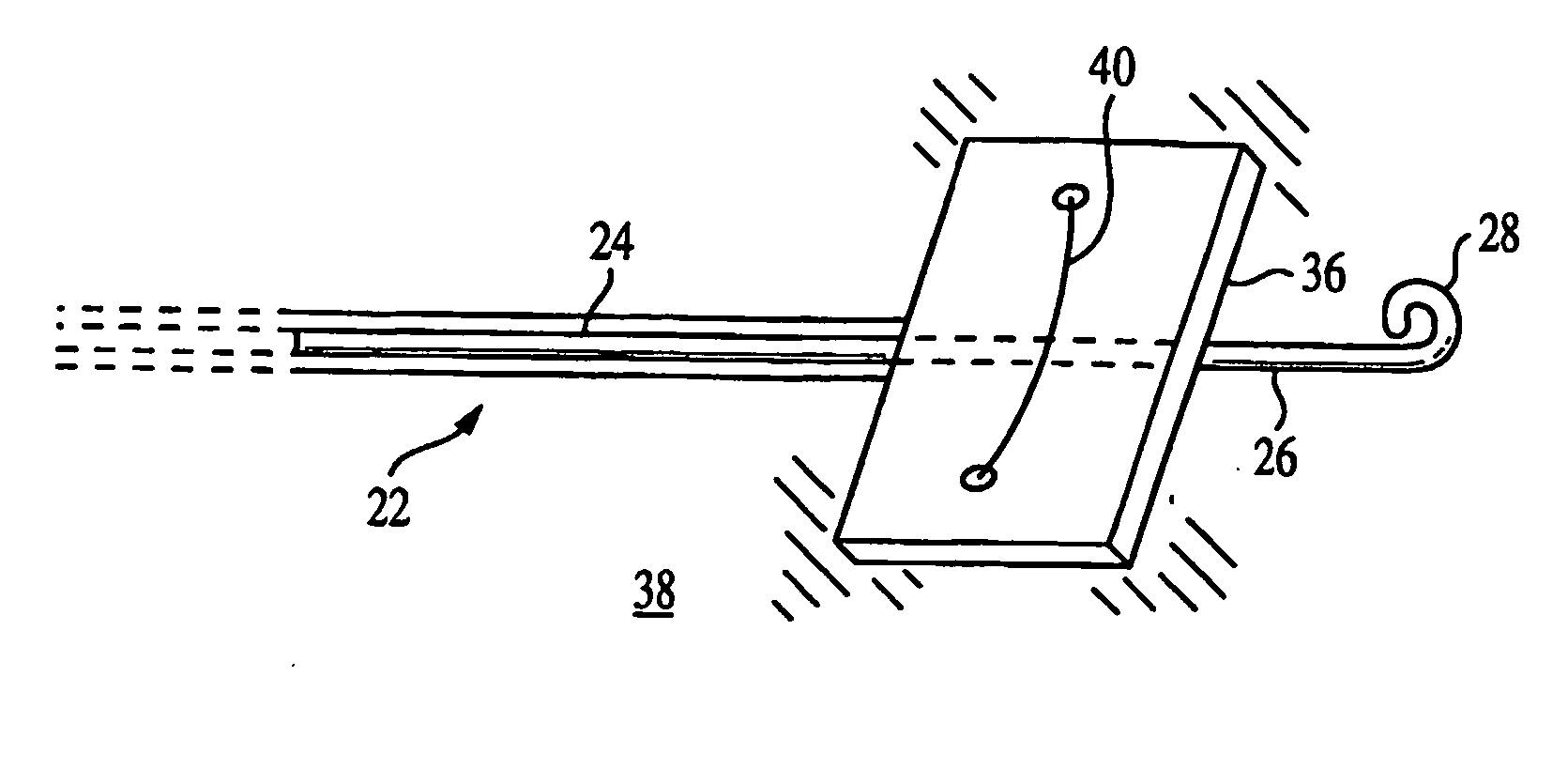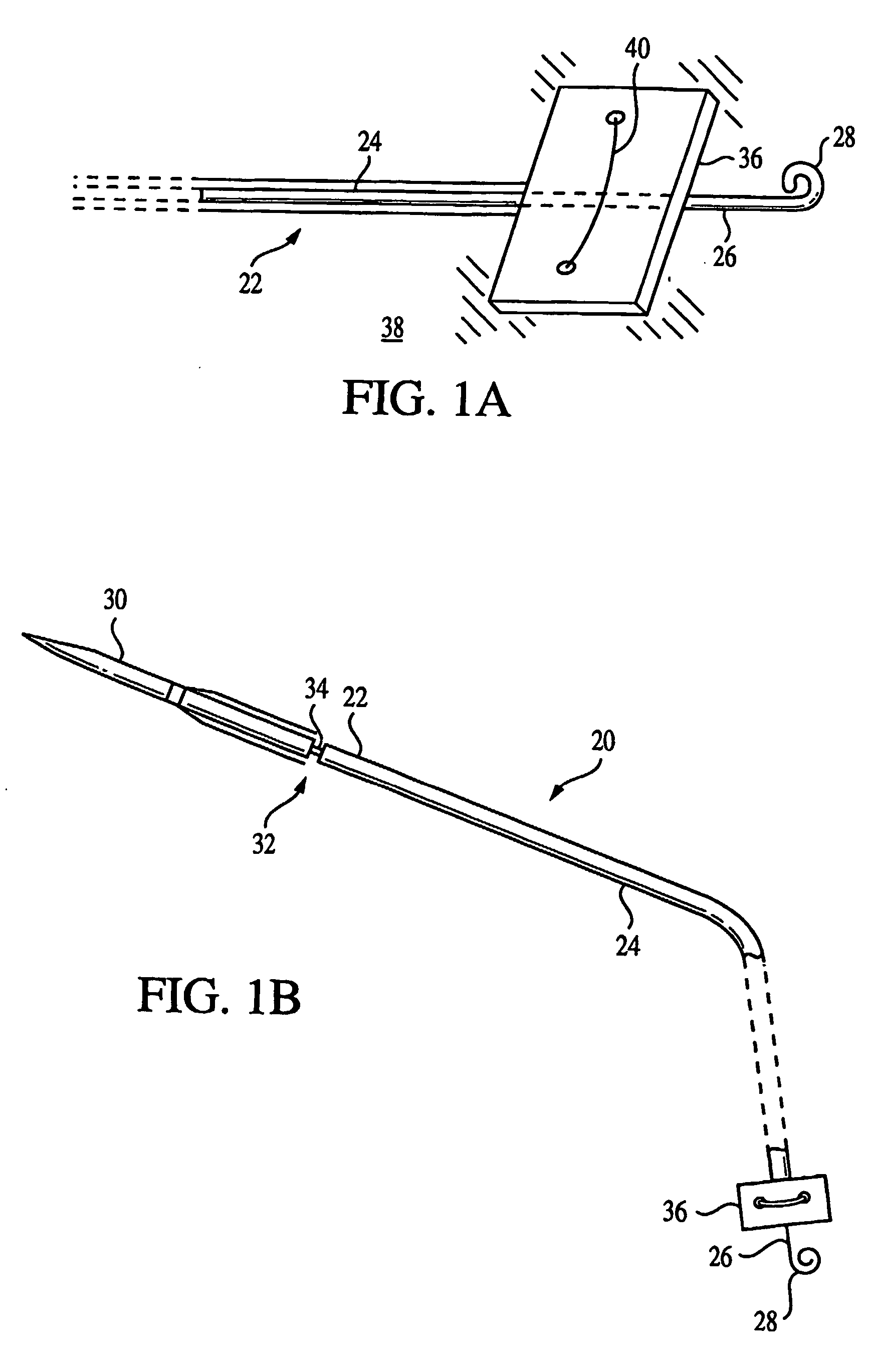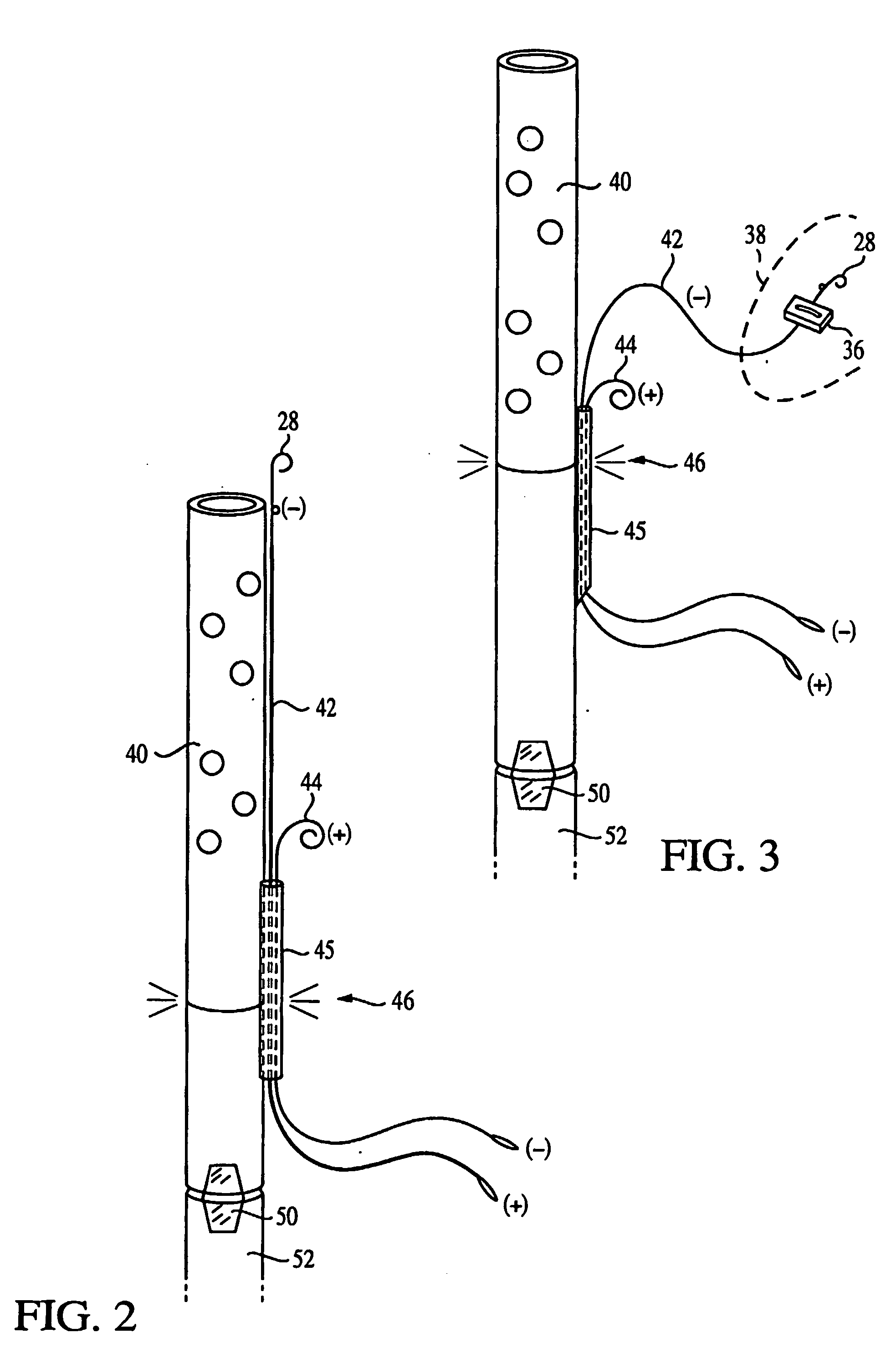Epicardial heartwire, chest tube with epicardial heartwire, and method of use
- Summary
- Abstract
- Description
- Claims
- Application Information
AI Technical Summary
Benefits of technology
Problems solved by technology
Method used
Image
Examples
first embodiment
[0032]FIGS. 1A and 1B show an epicardial heartwire 20 according to the invention, having a proximal end 22 and a distal end 26. Biocompatible insulation 24 covers most of the wire. At the opposite end of the heartwire is a distal end or pole 26 where the wire is bare. An insulated pigtail 28 which comprises for example a coiled silastic or silicone or other insulating material is attached to the distal pole by any convenient means. Another atraumatic structure such as tines, hooks or a coil may be substituted for the pigtail 28.
[0033]FIGS. 1A and 1B also show a conventional pledget 36. The pledget is shown connected to the myocardium of a patient 38 in conventional fashion, for example by a Prolene suture 40. The distal pole 26 of the heartwire 20 is placed underneath the pledget 36, between the pledget and the myocardium, for providing electrical contact for pacing. The pigtail 28 extends under and past the pledget and holds it in place there.
[0034] The heartwire 20 may be attache...
third embodiment
[0044]FIGS. 5 and 6 show the invention. A chest tube 40 has a first wire 42b and a second wire 44b fixed to the chest tube 40 by a pacing system fixation wing 58. The wing 58 is in turn fixed to the chest tube by a thin plastic film 60 or another suitable means, which is easily removable if it is desired to remove the chest tube without removing the heartwires.
[0045] As seen in FIG. 5, the first wire 42b need not be fixed to the distal end 54 as described above. It is shown free of the distal end 54 in FIG. 6. If it is initially fixed to the distal end 54, then it is separated at the time of use and placed in the position shown in FIG. 6.
[0046] In the embodiment of FIGS. 5-6, the wires 42a, 44b pass through a longitudinal lumen formed in the fixation wing 58. However, they may be adhered to the fixation wing 58 in any other suitable way as well.
[0047] This embodiment may for example be used for ventricular pacing by connecting the short ground (+) wire 44b to the ground (+) pole o...
PUM
 Login to View More
Login to View More Abstract
Description
Claims
Application Information
 Login to View More
Login to View More - R&D
- Intellectual Property
- Life Sciences
- Materials
- Tech Scout
- Unparalleled Data Quality
- Higher Quality Content
- 60% Fewer Hallucinations
Browse by: Latest US Patents, China's latest patents, Technical Efficacy Thesaurus, Application Domain, Technology Topic, Popular Technical Reports.
© 2025 PatSnap. All rights reserved.Legal|Privacy policy|Modern Slavery Act Transparency Statement|Sitemap|About US| Contact US: help@patsnap.com



